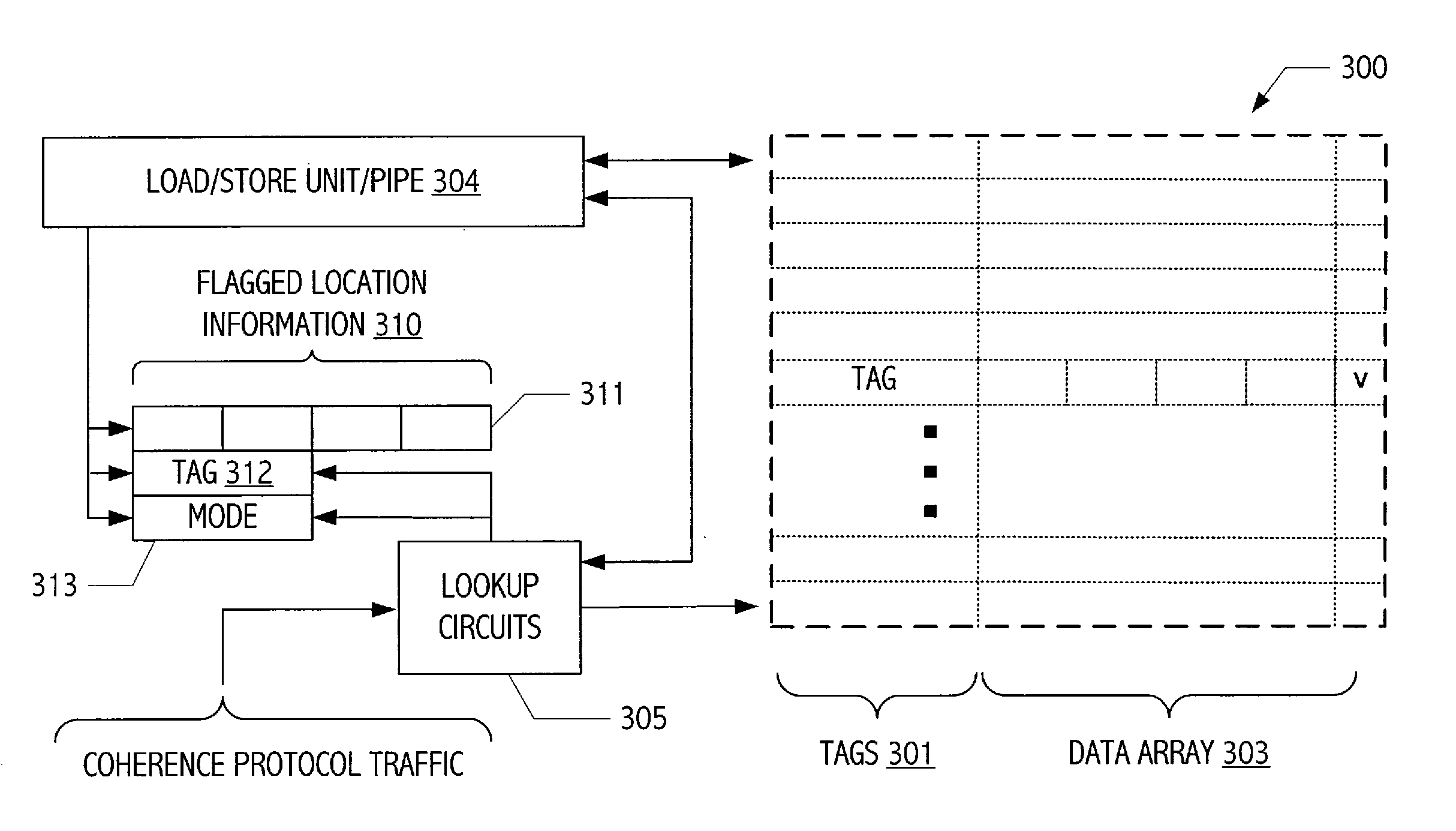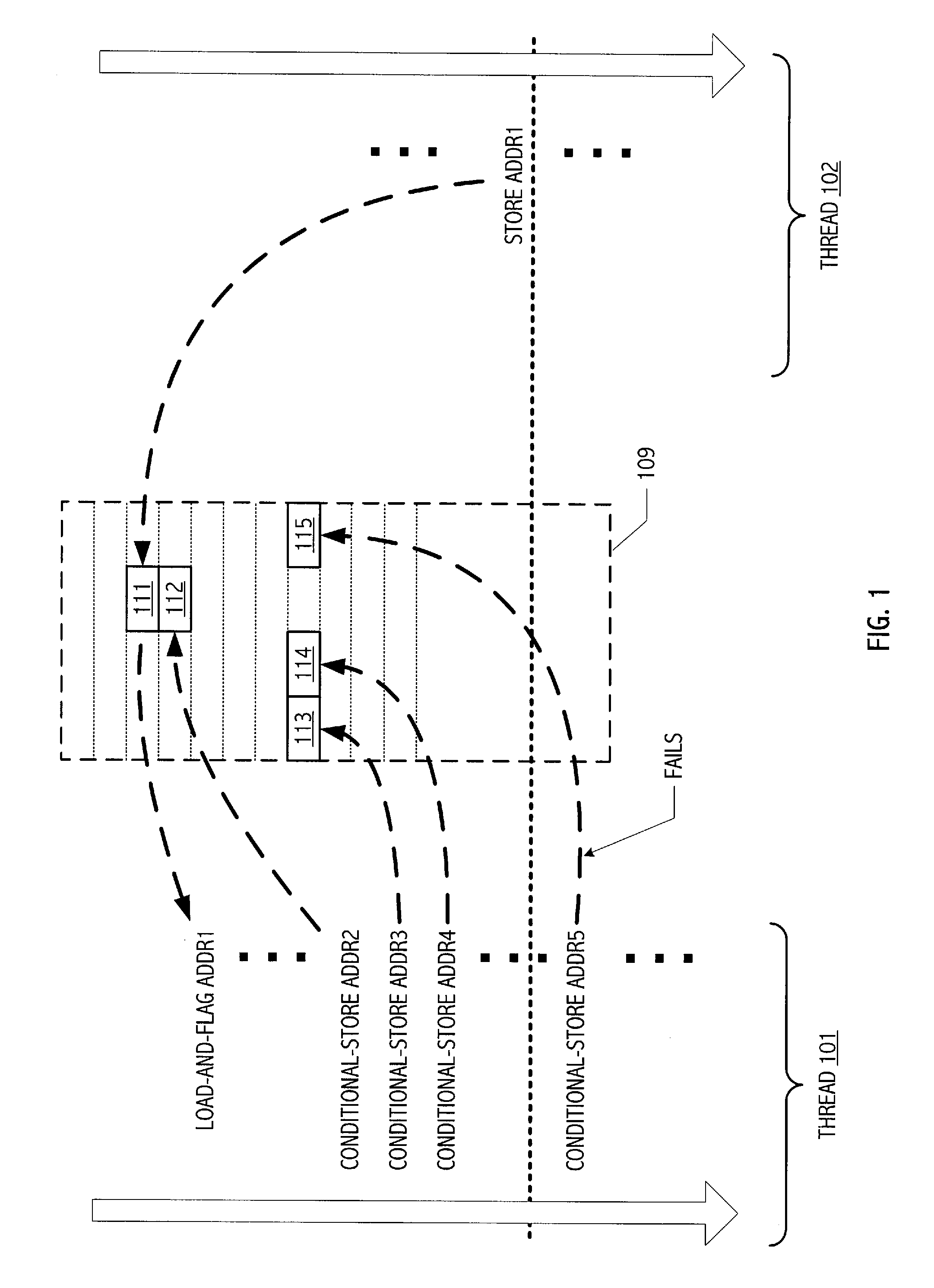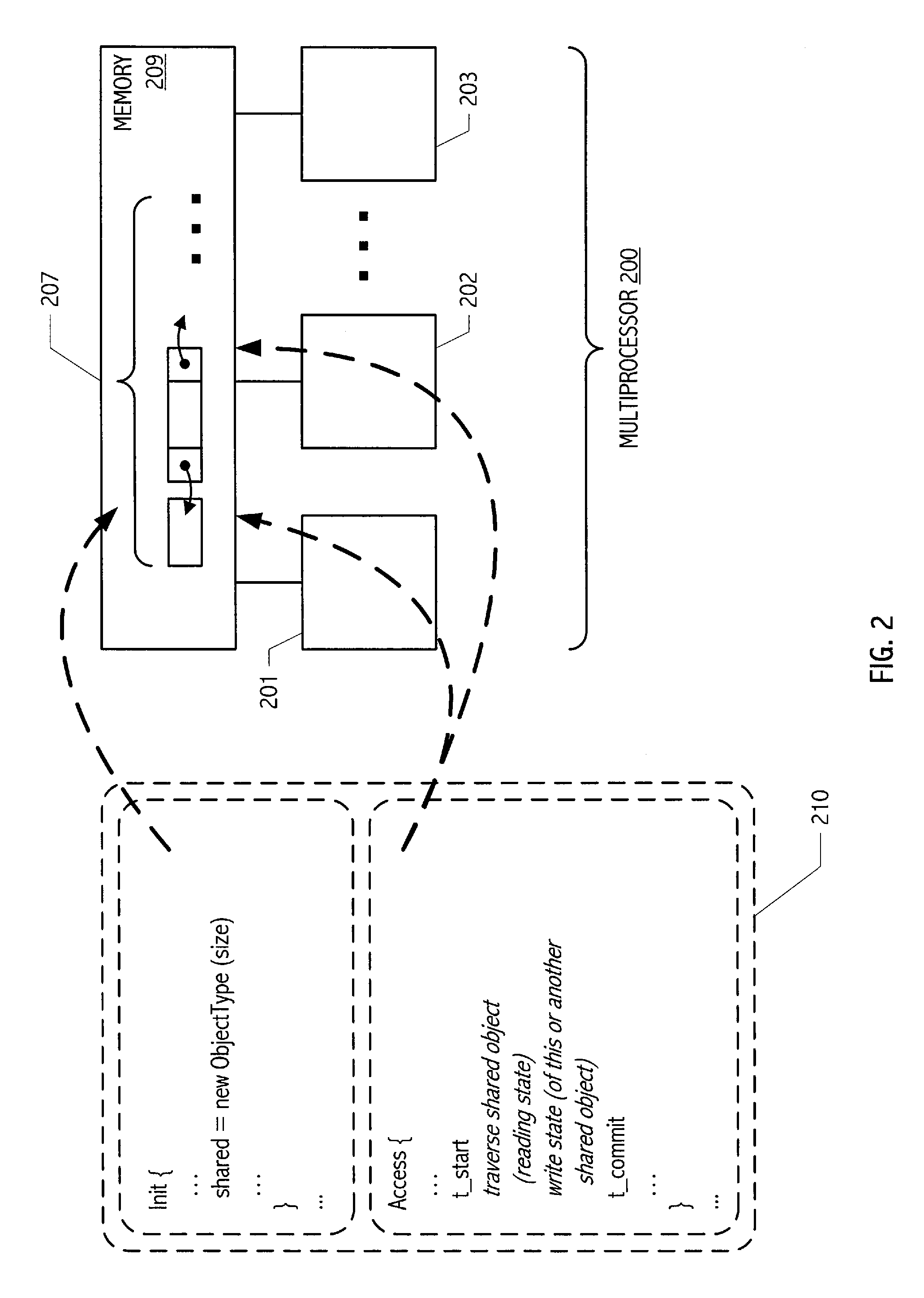Instruction set architecture employing conditional multistore synchronization
- Summary
- Abstract
- Description
- Claims
- Application Information
AI Technical Summary
Benefits of technology
Problems solved by technology
Method used
Image
Examples
Embodiment Construction
)
[0020] Versatile mechanisms have been developed for coordination amongst threads of one or more multithreaded computations. In particular, we describe herein a class of developed mechanisms that support a new style of synchronization offering both simple and efficient solutions to several problems for which existing solutions can be complicated, expensive, and / or otherwise inadequate. We call the proposed mechanisms “conditional multi-store synchronization mechanisms.” In general, such mechanisms may be concretely realized in a variety of forms, including: [0021] as processor and / or memory system implementations that manage access to addressable storage in the ways we describe herein (with or without the particular operation semantics described herein); and / or [0022] as instruction set architectures or instruction sequences that provide or include operations with load-and-flag, conditional-store operation semantics (whether or not supported using particular processor and / or memory ...
PUM
 Login to View More
Login to View More Abstract
Description
Claims
Application Information
 Login to View More
Login to View More - R&D
- Intellectual Property
- Life Sciences
- Materials
- Tech Scout
- Unparalleled Data Quality
- Higher Quality Content
- 60% Fewer Hallucinations
Browse by: Latest US Patents, China's latest patents, Technical Efficacy Thesaurus, Application Domain, Technology Topic, Popular Technical Reports.
© 2025 PatSnap. All rights reserved.Legal|Privacy policy|Modern Slavery Act Transparency Statement|Sitemap|About US| Contact US: help@patsnap.com



